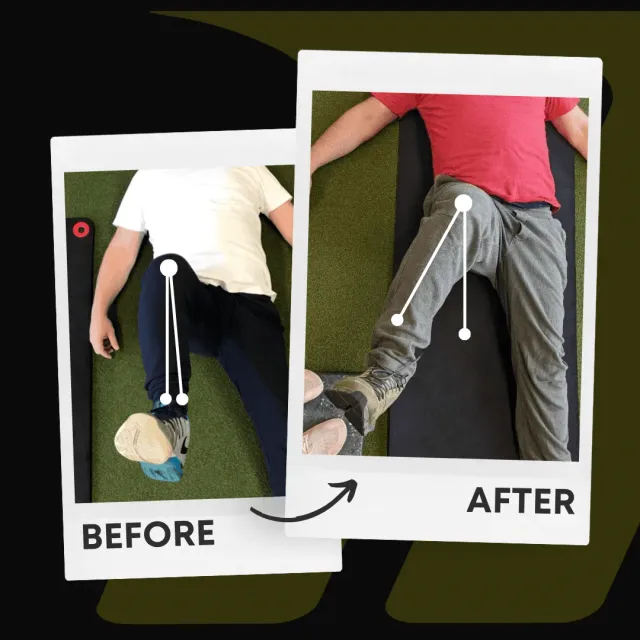Top 7 Weight Loss Tips For Lasting Results And Healthy Living
February 2, 2025 | Healthy Living

Embark on your weight loss journey with the guidance of Motive Training. We combine evidence-based practices with personalized approaches to help you understand and adopt sustainable habits. These five habits, rooted in research and practicality, will be your allies in making meaningful progress on your weight loss journey in 2025.
1. Prioritize Consistent Physical Activity for Weight Loss
Exercise is foundational not only for weight loss but also to lose body fat, with benefits extending far beyond burning calories. Regular physical activity enhances metabolic rate, preserves lean muscle mass, and improves overall health. The goal is to integrate movement into your lifestyle consistently rather than relying on sporadic bursts of intense exercise.
Understanding The Science Behind It:
Research shows that combining resistance training with aerobic exercise is one of the most effective ways to promote fat loss while preserving muscle mass. Resistance training builds strength and increases resting metabolic rate, while aerobic activity enhances cardiovascular health and overall calorie expenditure, which can help promote weight loss.
Finding Activities You Enjoy
Finding activities you enjoy is essential for maintaining a healthy lifestyle and achieving weight loss success. Exercise should not be a chore but rather something you look forward to doing. When you enjoy the activities you’re doing, you’re more likely to stick with them and make them a part of your daily routine.
Consider the following:
- Experiment with new activities: Try swimming, cycling, dancing, or any other activity that piques your interest. Variety keeps things exciting.
- Schedule it in: Make physical activity a non-negotiable part of your day, like taking a walk during your lunch break.
- Find a workout buddy: Exercising with a friend or joining a fitness class can make workouts more enjoyable and keep you accountable.
- Incorporate fun into your routine: Simple changes like taking the stairs instead of the elevator or walking to work can add up and make a big difference.
2. Setting Goals and Creating a Plan
Setting realistic goals is a crucial step in achieving weight loss success. It’s essential to set specific, measurable, achievable, relevant, and time-bound (SMART) goals. For example, instead of saying “I want to lose weight,” say “I want to lose 10 pounds in the next 3 months.” Having a clear goal in mind will help you stay focused and motivated.
When setting your goals, consider the following:
- Start small and build momentum: Aim to lose 1-2 pounds per week. This gradual approach is more sustainable and less overwhelming.
- Be specific and measurable: Instead of vague goals, opt for clear ones like “I want to eat 5 servings of fruits and vegetables every day.”
- Keep it realistic: Ensure your goals fit your lifestyle and schedule. Unrealistic goals can lead to frustration and setbacks.
- Stay relevant: Your goals should align with your overall health and well-being, not just the number on the scale.
- Set a timeline: Having a deadline, such as “I want to lose 10 pounds in the next 3 months,” helps keep you accountable and focused.
3. Creating a Supportive Environment
Building a support network is crucial for achieving weight loss success. Having a supportive network of family, friends, and healthcare professionals can help you stay motivated and accountable.
Consider the following:
- Share your goals: Let a friend or family member know about your weight loss goals and ask for their support. Their encouragement can be invaluable.
- Join a support group: Whether in-person or online, connecting with others who are on a similar journey can provide motivation and a sense of community.
- Consult professionals: A registered dietitian or healthcare professional can offer personalized advice and support tailored to your needs.
- Surround yourself with positivity: Engage with people who encourage and support your healthy lifestyle choices. Their positive influence can help you stay on track.
By setting realistic goals, finding enjoyable activities, and building a supportive environment, you can create a sustainable path to losing excess body fat and achieving your desirable body weight. Remember, the journey to health is a marathon, not a sprint. Stay committed, and you’ll see lasting results.
How to Implement This Habit:
- Start small and build momentum: If you’re new to exercise, begin with three 20-minute sessions per week. Focus on foundational movements like squats, push-ups, and lunges, which activate multiple muscle groups.
- Incorporate NEAT (Non-Exercise Activity Thermogenesis): Activities like walking, cleaning, or taking the stairs can add up significantly over time. Aim for 7,000–10,000 steps daily to increase your energy expenditure effortlessly.
- Mix it up: Balance strength training with activities you enjoy, like swimming, hiking, or dancing, to keep your routine engaging and sustainable.
4. Focus on a Balanced Diet, Not Fad Diets
Steer clear of fad diets that promise rapid weight loss but often fail to deliver long-term results. Instead, focus on the sustainable approach of creating a balanced diet that incorporates healthy foods, meets your nutritional needs, and supports your weight loss journey.
Components of a Balanced Diet:
- Protein: Supports muscle repair, boosts satiety, and helps regulate blood sugar levels. High protein diets, which have been historically introduced and debated, may spare lean body mass and improve metabolic markers, though concerns about their long-term safety and initial weight loss being primarily water rather than fat remain. Include lean sources like chicken, fish, tofu, eggs, and legumes at each meal.
- Healthy Fats are essential for hormone regulation and energy. Incorporate avocados, nuts, seeds, and olive oil.
- Complex Carbohydrates: Provide long-lasting energy and essential nutrients. Choose whole grains, sweet potatoes, and legumes over refined grains like white bread or pasta.
- Fruits and Vegetables: High in fiber and antioxidants, they promote satiety and overall health.
How to Implement This Habit
- Meal prep: Dedicate time each week to preparing meals and snacks. Having healthy options on hand reduces reliance on convenience foods.
- Follow the plate method: Fill half your plate with non-starchy vegetables, one quarter with lean protein, and one-quarter with whole grains or starchy vegetables.
- Embrace Moderation And Avoid Extreme Restrictions: For more tips on sustainable nutrition, explore Precision Nutrition’s guide to healthy eating (Source: Precision Nutrition).
5. Eat Mindfully and Monitor Your Food Intake
Mindful eating encourages you to slow down, savor your food, and analyze your eating patterns to tune into your body’s hunger and fullness cues. This practice enhances your relationship with food and helps you naturally regulate your calorie intake without feeling deprived.
The Benefits of Mindful Eating:
- Reduces emotional eating by helping you differentiate between physical hunger and emotional triggers, which is crucial for losing weight.
- Encourages portion control by focusing on the sensory experience of eating.
- Enhances digestion and satisfaction by promoting slower, more deliberate meals.
How to Implement This Habit:
- Use food journals: Tracking your meals can help you identify patterns and triggers that influence your eating habits. Apps like MyFitnessPal or even a simple notebook can be effective.
- Create a distraction-free environment: Turn off screens and focus on your meal to better recognize when you’re full.
- Practice the “20-minute rule”: It takes about 20 minutes for your brain to register fullness. Eating slowly can help you avoid overeating.
Advanced Strategy:
Consider intermittent fasting if it aligns with your lifestyle. Precision Nutrition explains how time-restricted eating can promote fat loss while maintaining muscle mass.
6. Manage Energy Balance Strategically
Creating a calorie deficit—consuming fewer calories than you burn—is essential for weight loss and preventing unwanted weight gain. However, the key is to achieve this deficit sustainably that doesn’t compromise your energy levels, muscle mass, or overall health.
Why Extreme Calorie Restriction Fails:
- It often leads to loss of lean muscle, which slows your metabolism.
- Extreme hunger can result in binge eating, negating any progress made.
- It’s not sustainable, making it difficult to maintain weight loss and leading to eventual weight regain.
How to Implement This Habit:
- Determine your caloric needs: Use an online calculator to estimate your daily calorie requirements, then aim for a modest deficit of 300–500 calories per day.
- Focus on nutrient density: Choose foods that are high in volume but low in calories, such as leafy greens, cucumbers, and berries.
- Limit liquid calories: Sugary beverages, juices, and alcohol can contribute significant calories without providing satiety.
Practical Example:
Instead of focusing solely on cutting calories, try increasing physical activity and choosing higher-satiety foods to naturally reduce your intake. For more on this approach, check out Precision Nutrition’s guide to energy balance (Source: Precision Nutrition).
7. Build Habits That Support Long-Term Success
Weight loss is not about short-term gains; it’s about building habits that last a lifetime. You can integrate the best strategies seamlessly into your daily routine, creating a healthier lifestyle over time.
Foundational Habits to Cultivate:
- Sleep: Prioritize 7–9 hours per night. Sleep deprivation disrupts hormones like ghrelin (which stimulates appetite) and leptin (which signals fullness).
- Hydration: Drink at least 2 liters of water daily. Staying hydrated can prevent overeating since thirst is often mistaken for hunger.
- Stress management: Chronic stress increases cortisol levels, which can lead to fat storage and cravings. To mitigate stress, incorporate techniques like meditation, deep breathing, or journaling.
How to Implement This Habit:
- Establish a routine: Consistency is key. Create a morning or evening routine supporting your goals, such as preparing meals, packing a gym bag, or practicing gratitude.
- Set SMART goals: Specific, Measurable, Attainable, Relevant, and Time-bound goals keep you on track. For example, “I will complete three strength-training sessions each week for the next month.”
- Seek support: Accountability can make all the difference, whether through a coach, a training buddy, or a supportive community.
Final Thoughts
Weight loss isn’t about quick fixes or following the latest trends. It’s about creating a sustainable lifestyle that supports your health and fitness goals. You can achieve lasting results by focusing on consistent physical activity, a balanced diet, mindful eating, strategic energy management, and long-term habits. At Motive Training, we’re here to guide you every step of the way with science-backed strategies and personalized coaching. Ready to move with purpose? Let’s make 2025 the year you take control of your health and create a body you’re proud of.
Written by:
 Brian Murray, FRA, FRSC
Brian Murray, FRA, FRSC
Founder of Motive Training
We’ll teach you both how to move with purpose so you can lead a healthy, strong, and pain-free life. Our headquarters are in Austin, TX, but you can work with us online by signing up for KINSTRETCH Online or digging deep into one of our Motive Mobility Blueprints.

